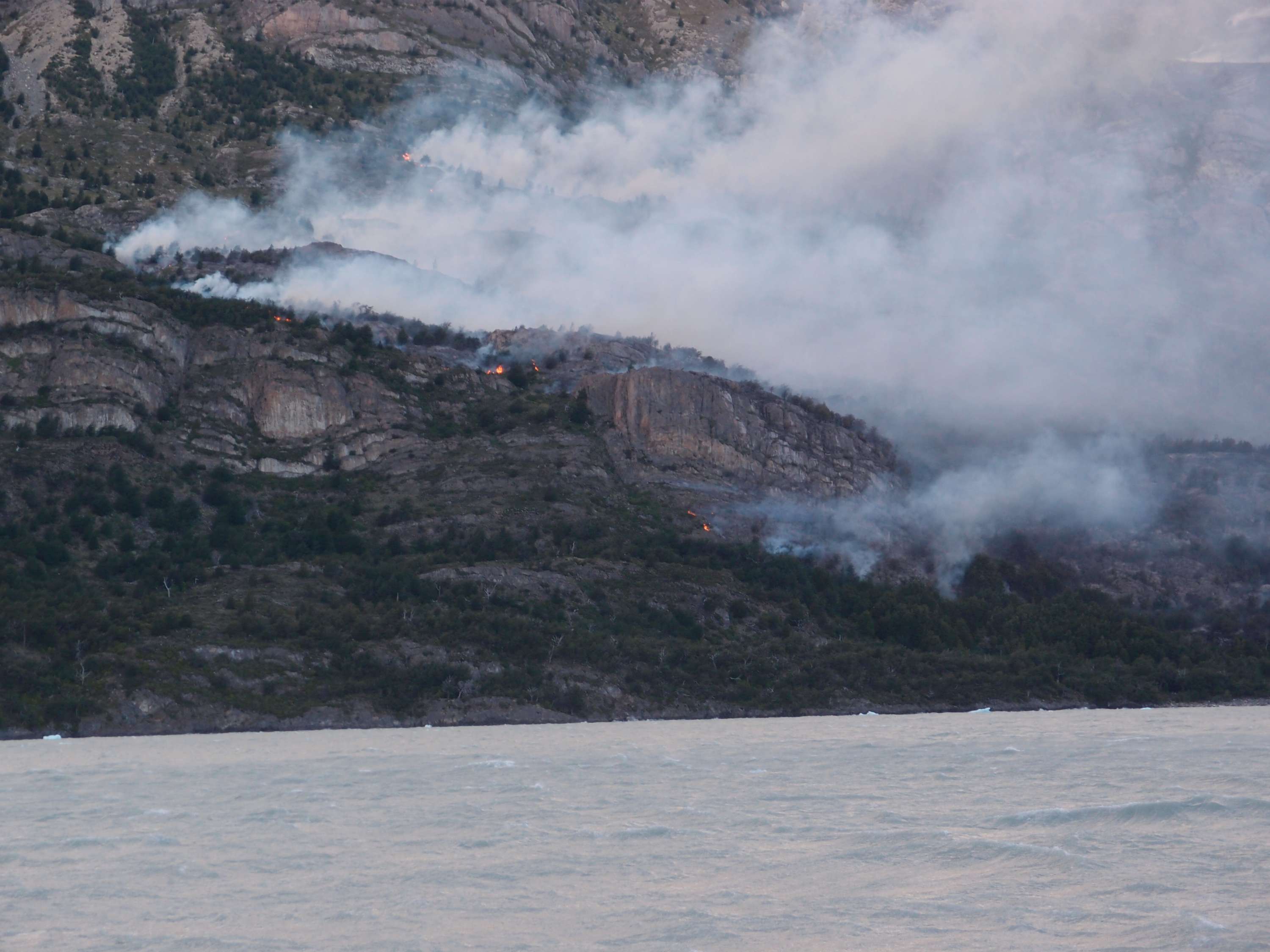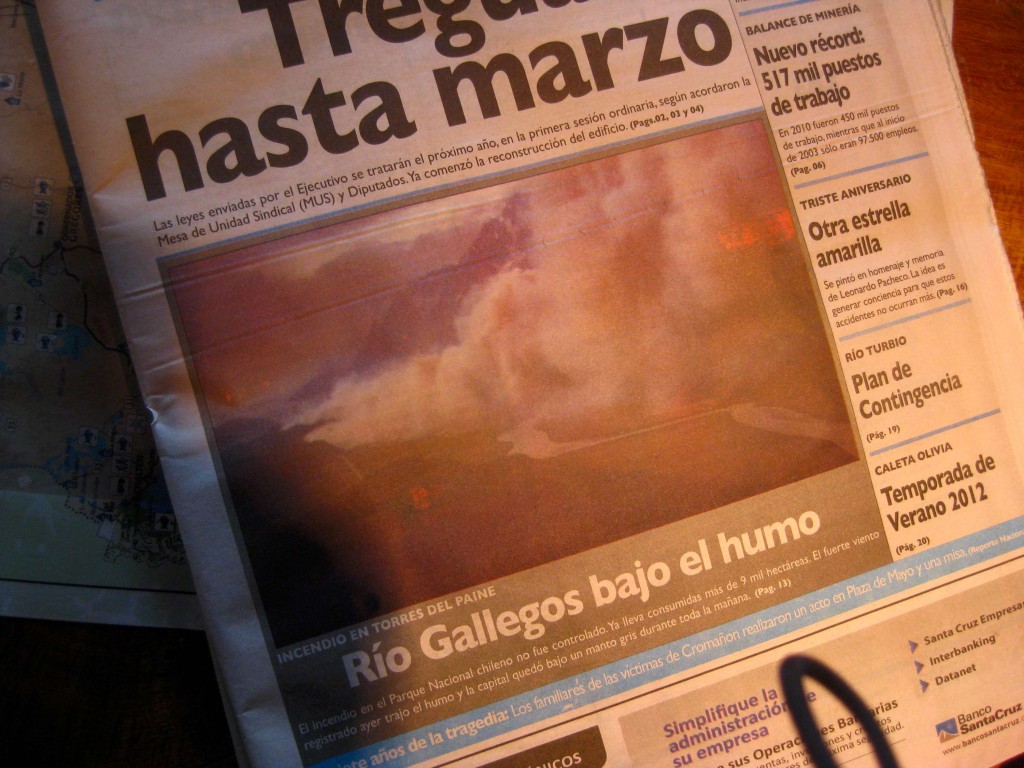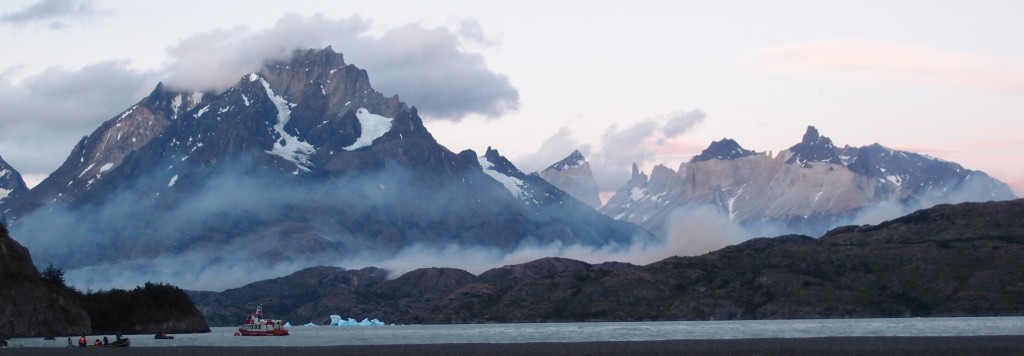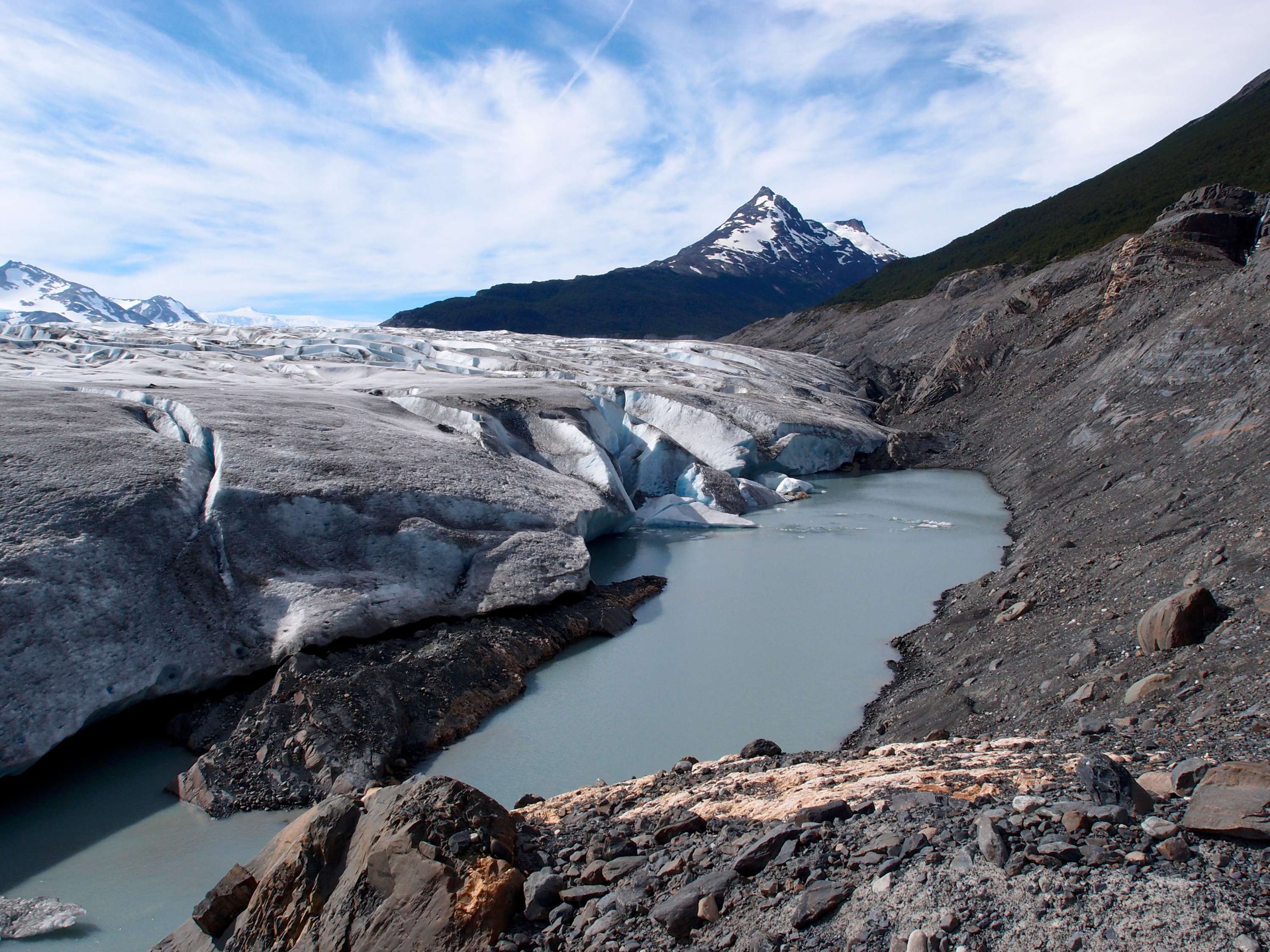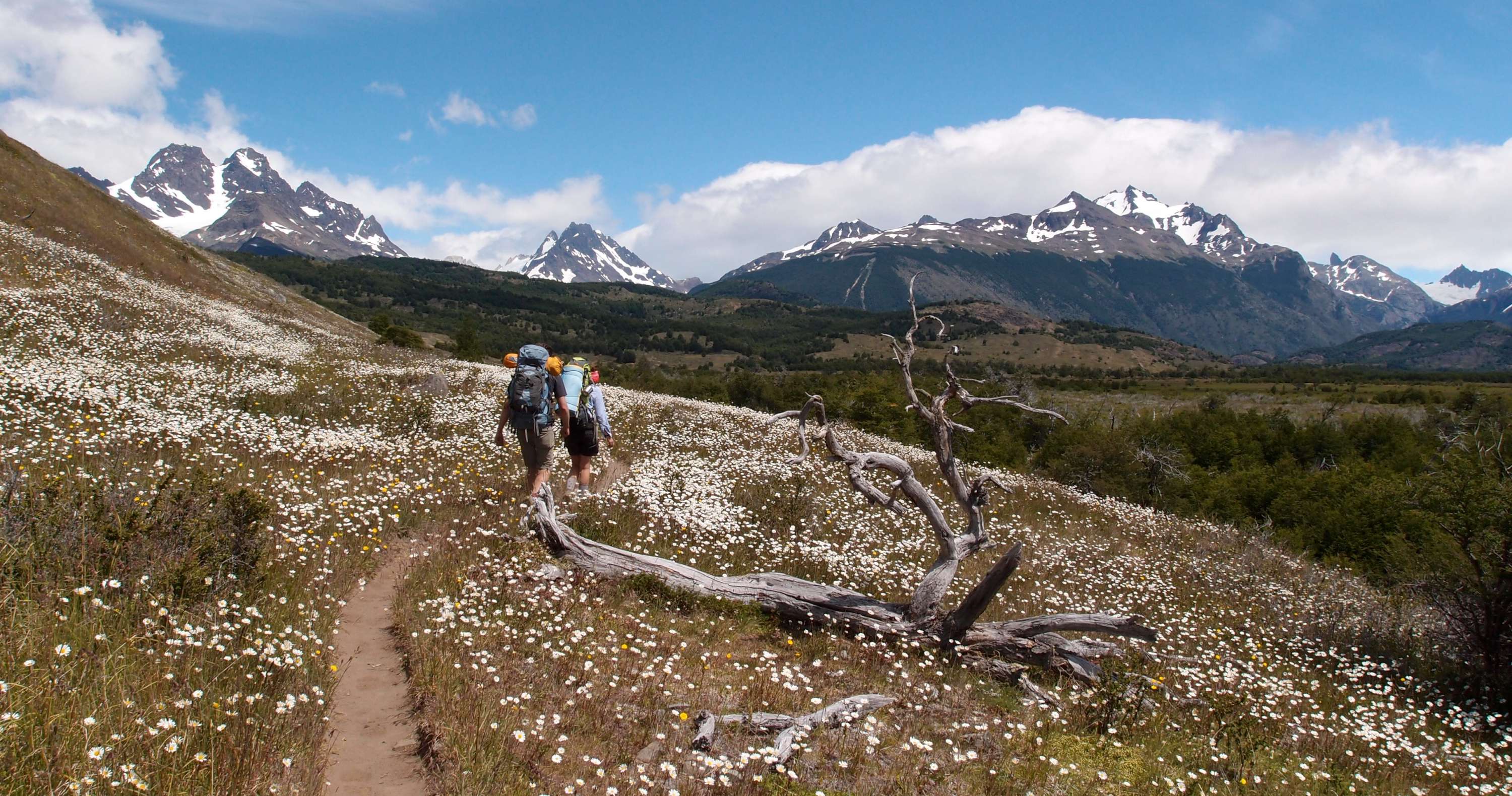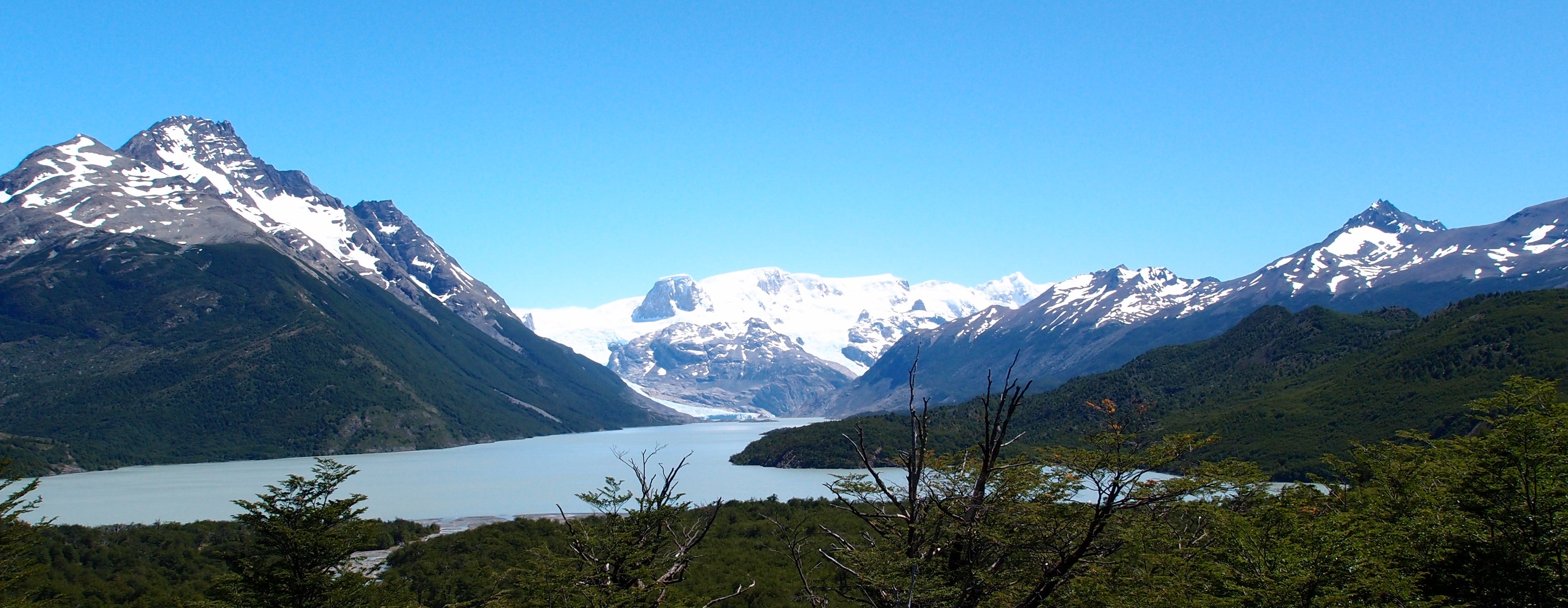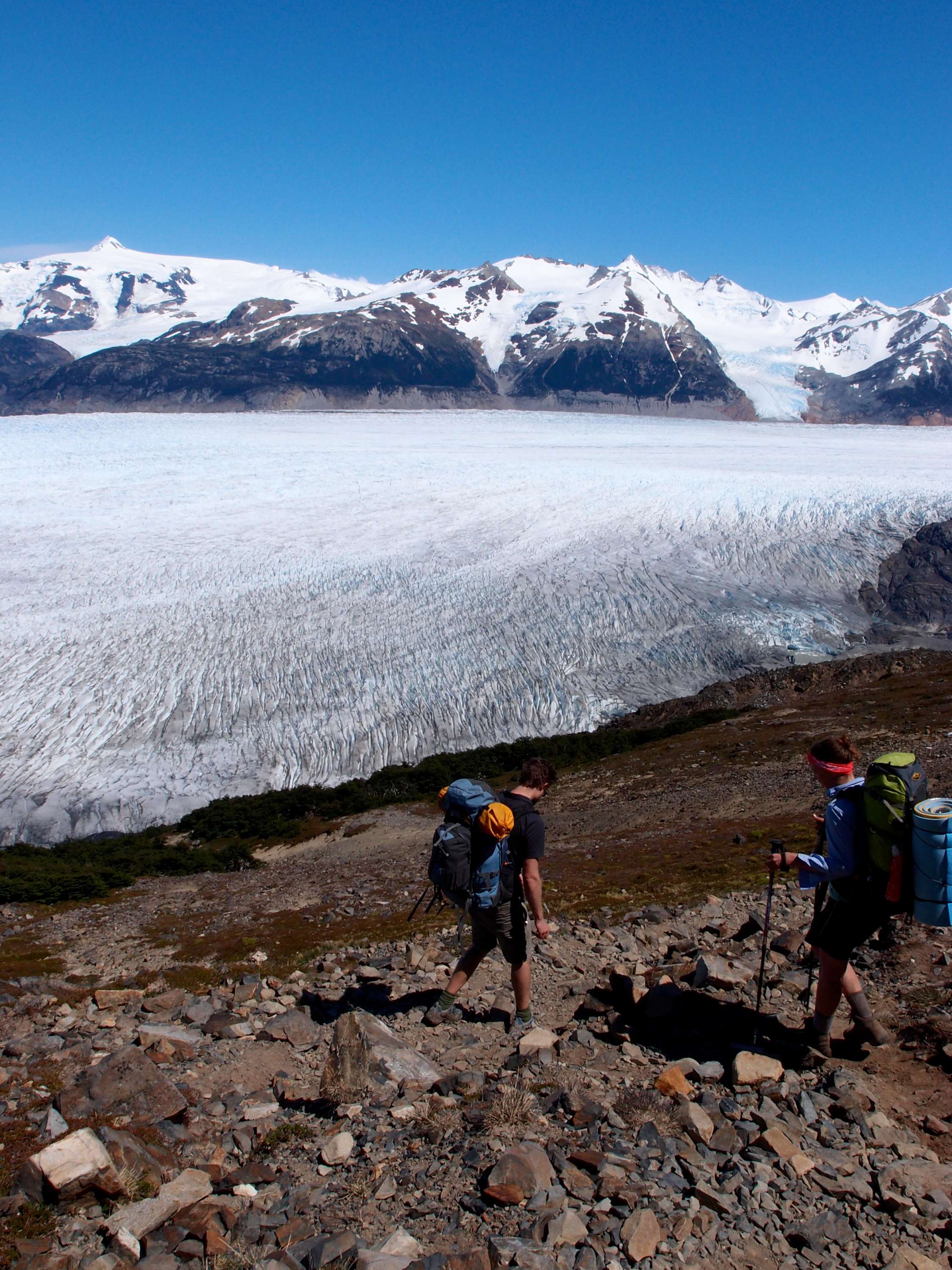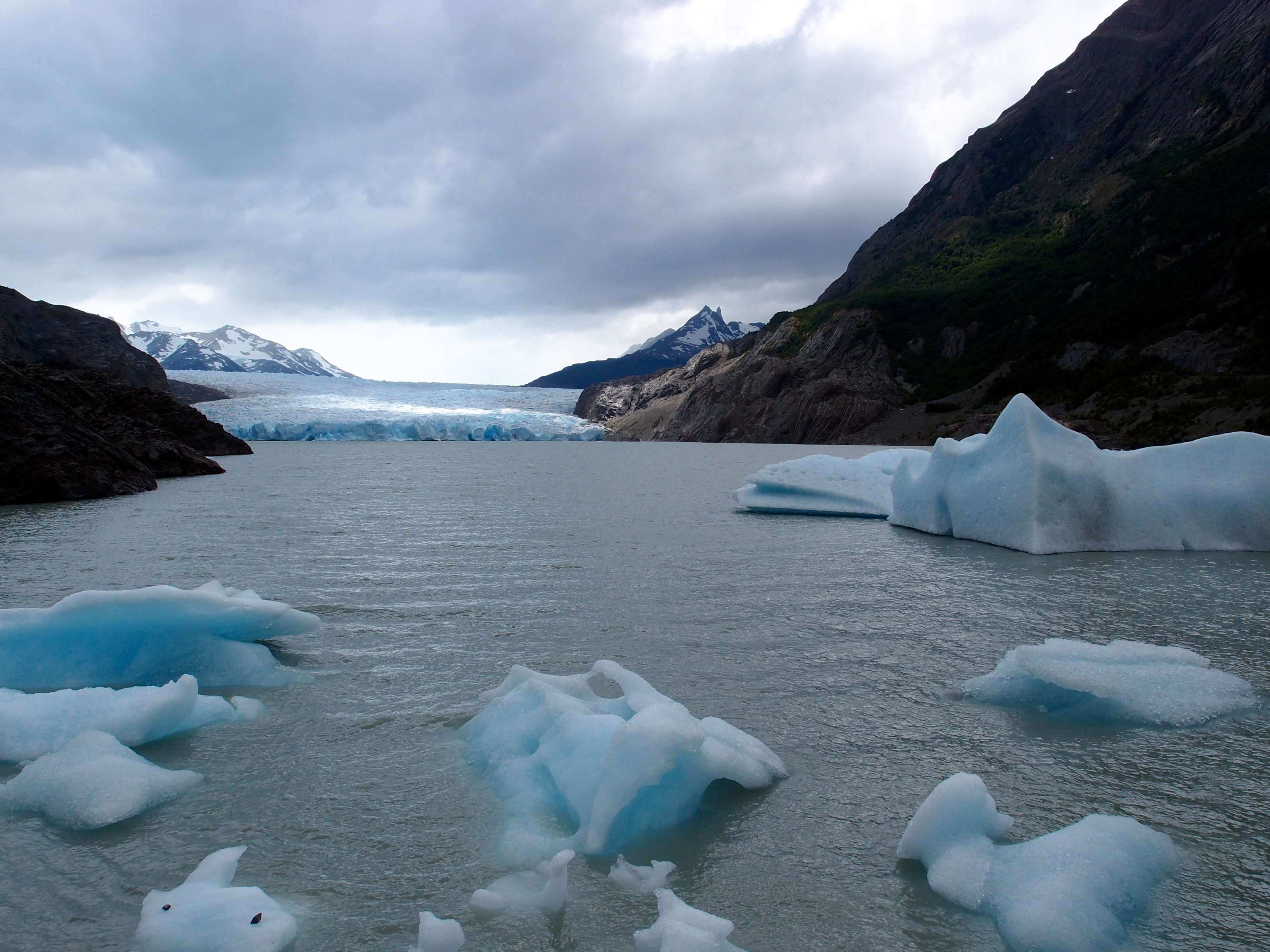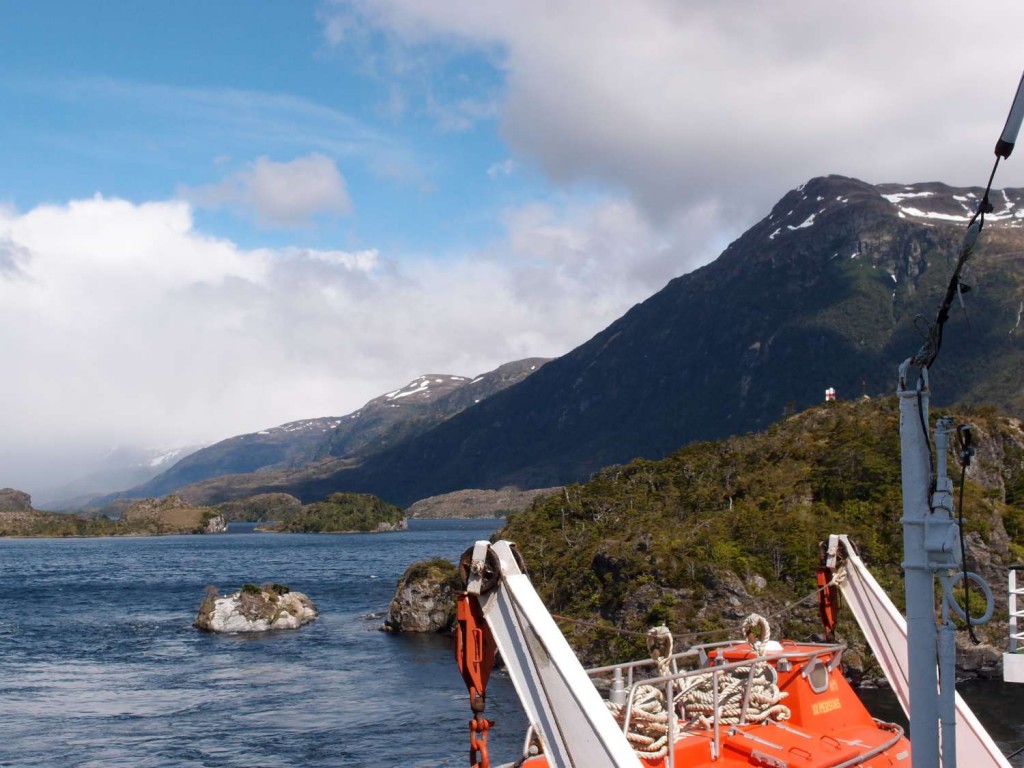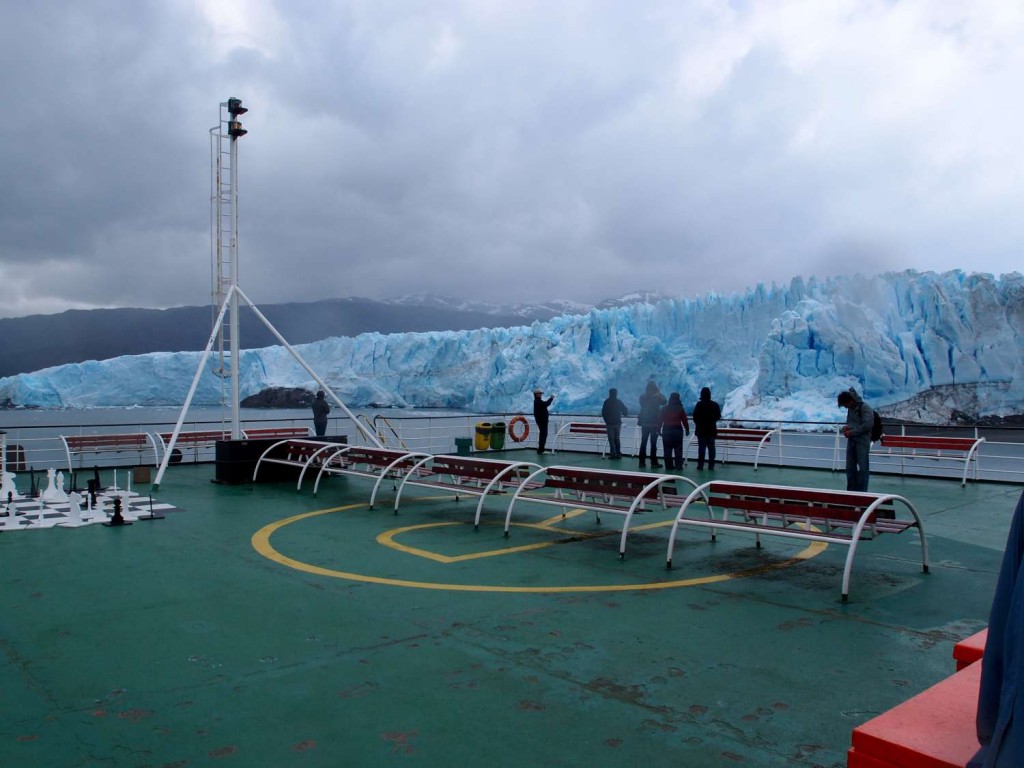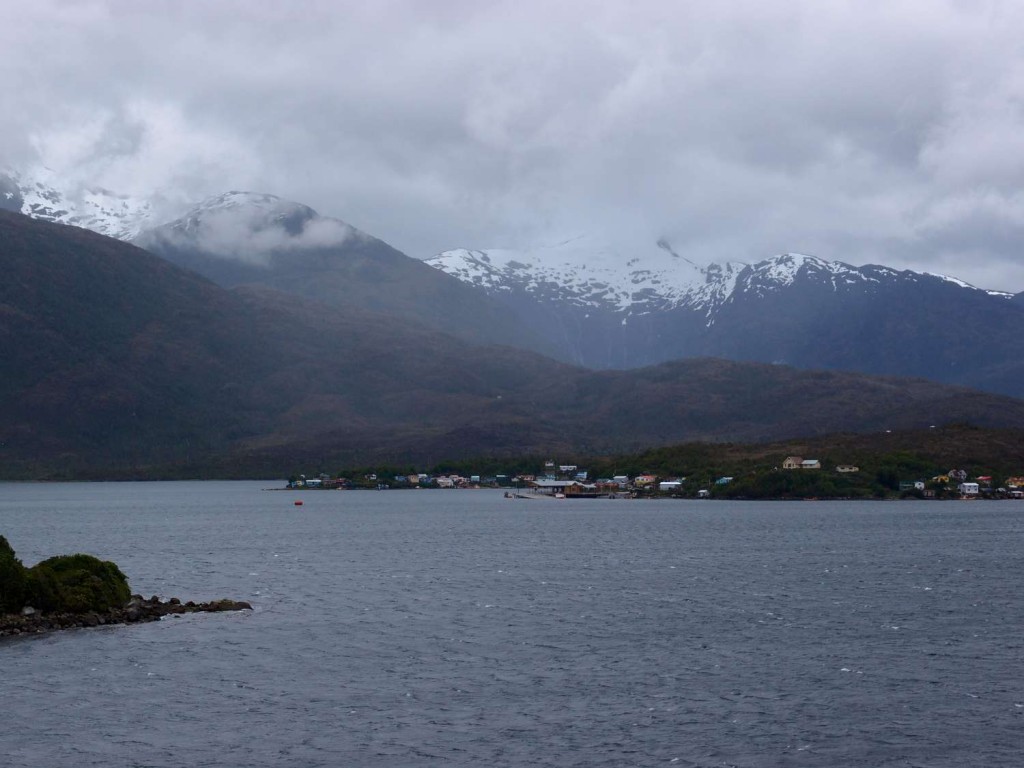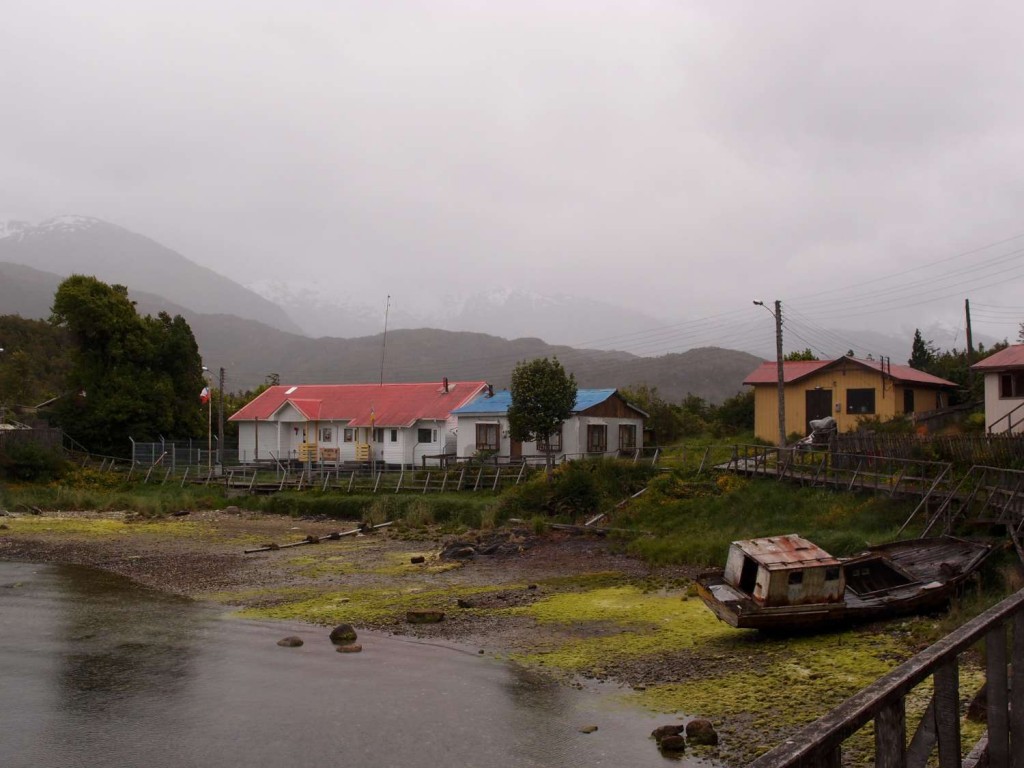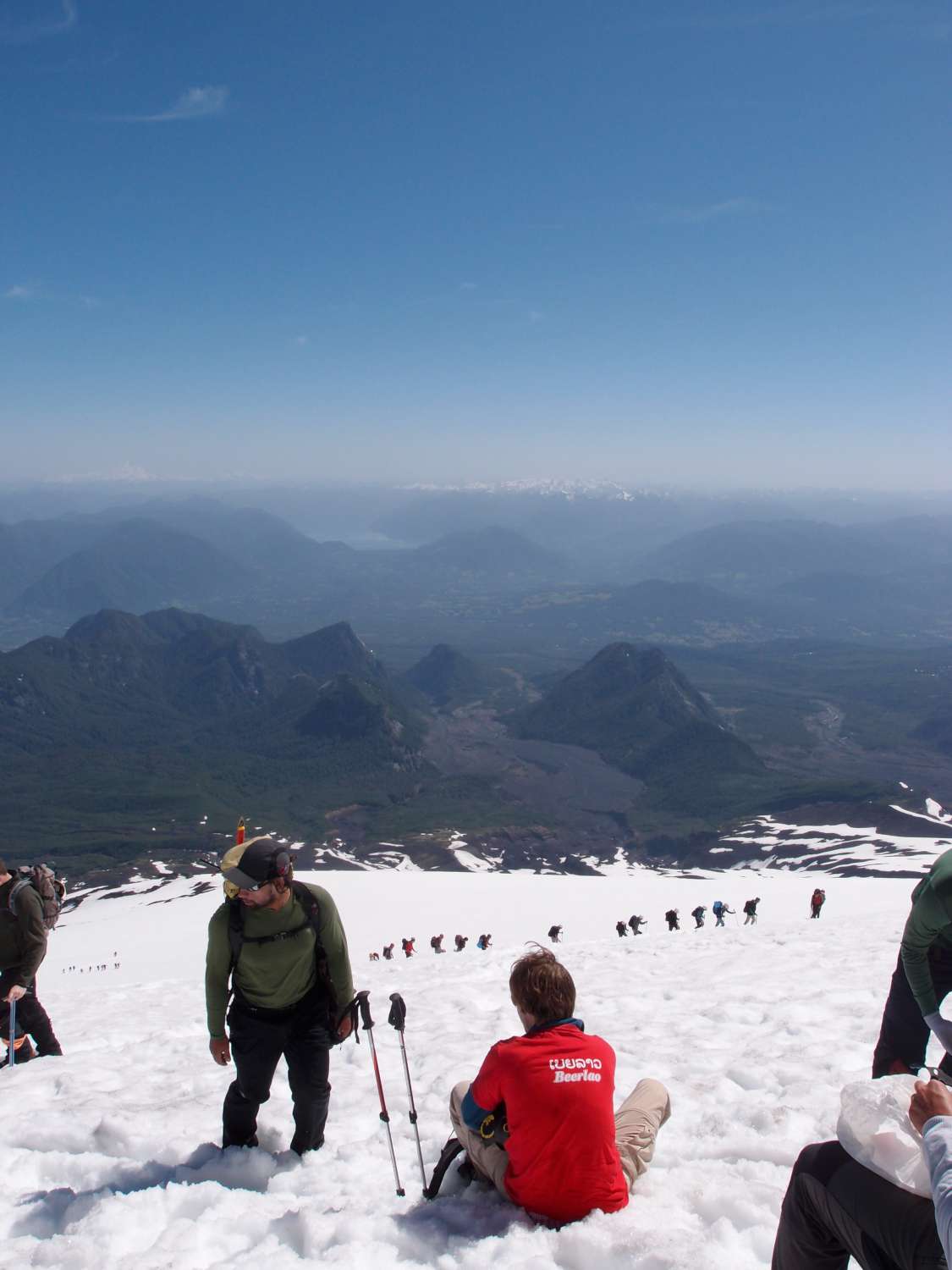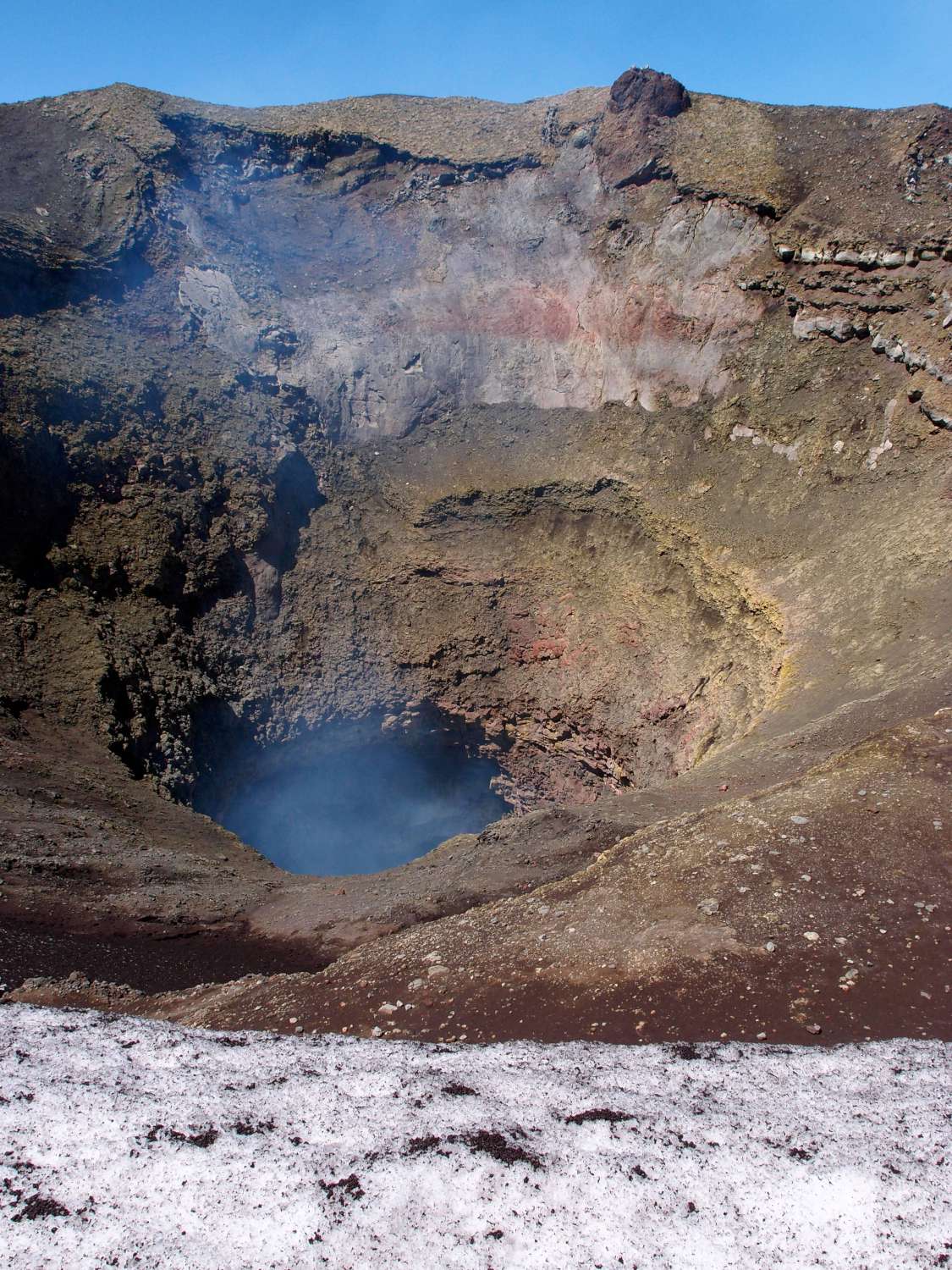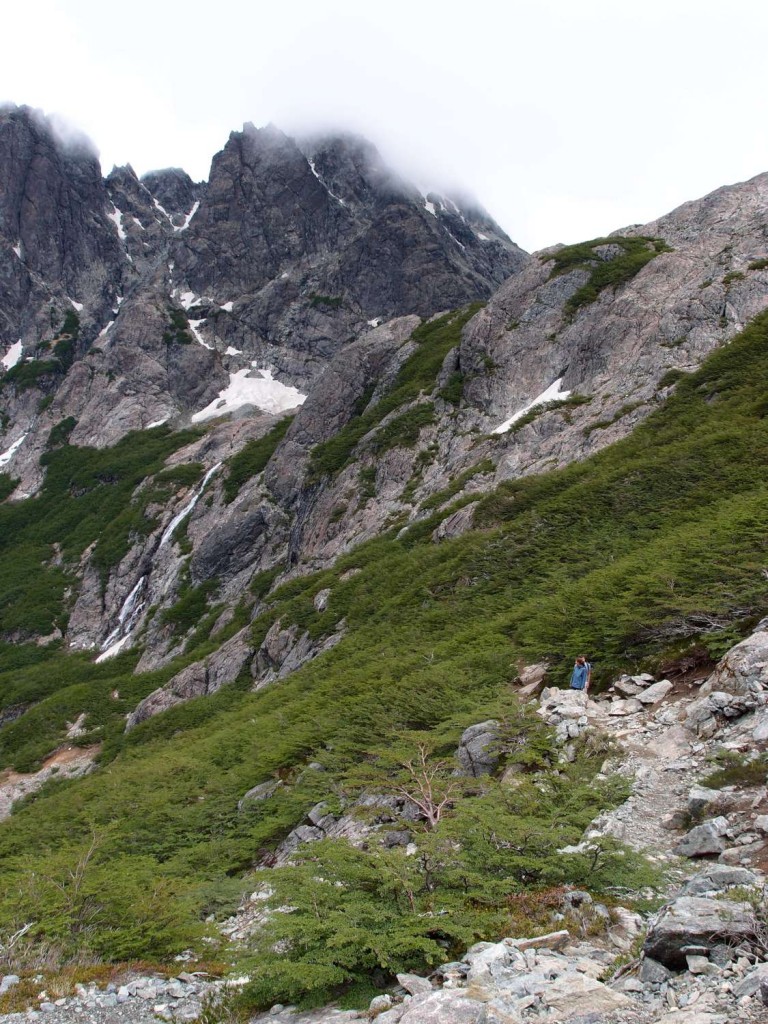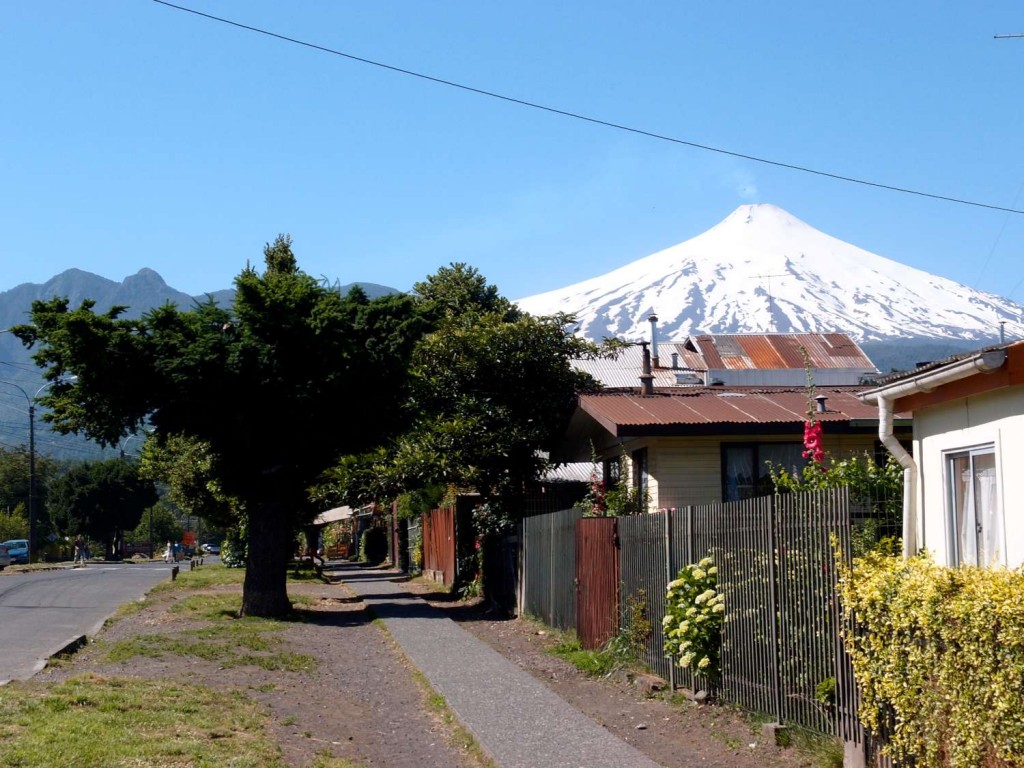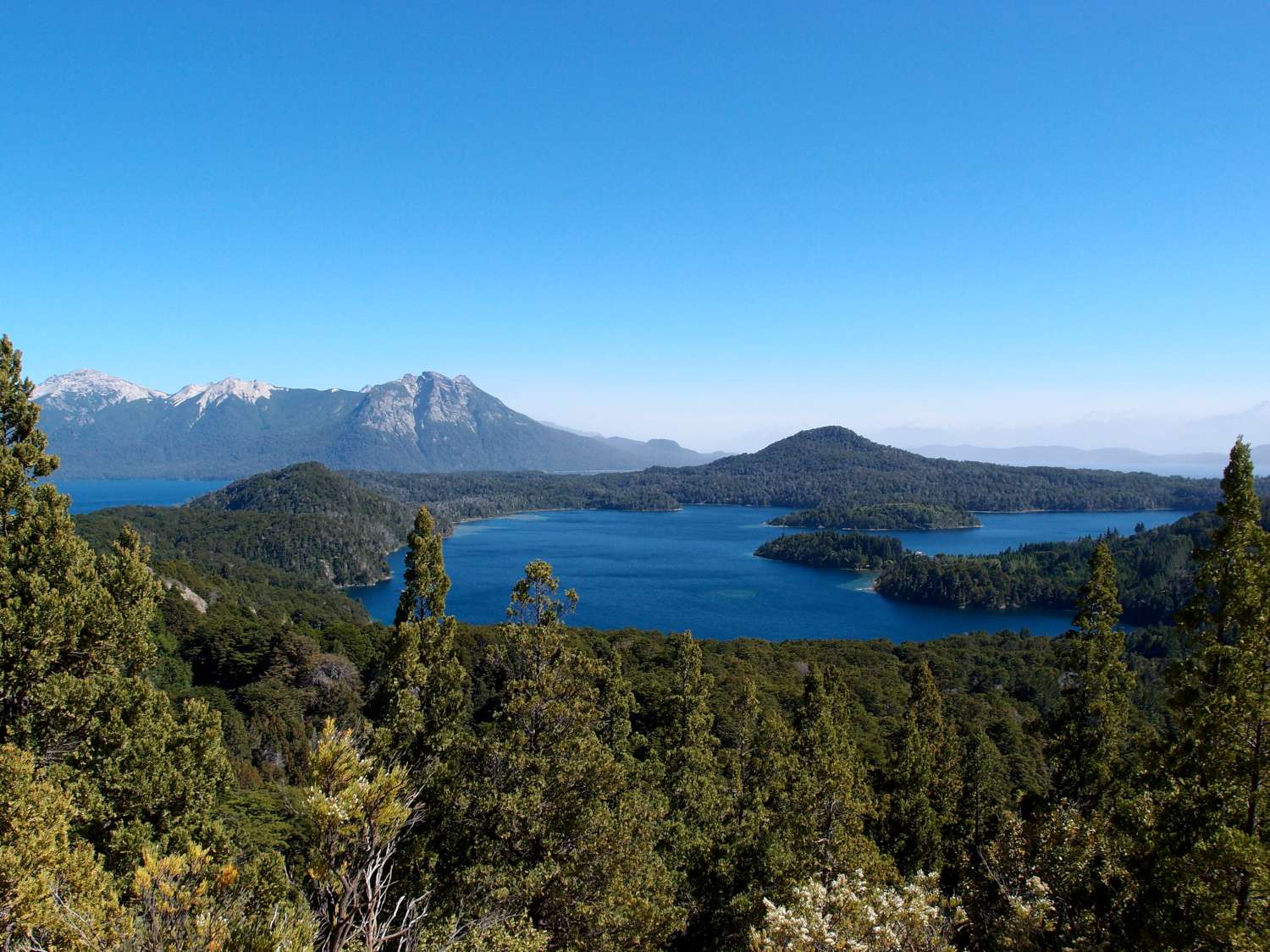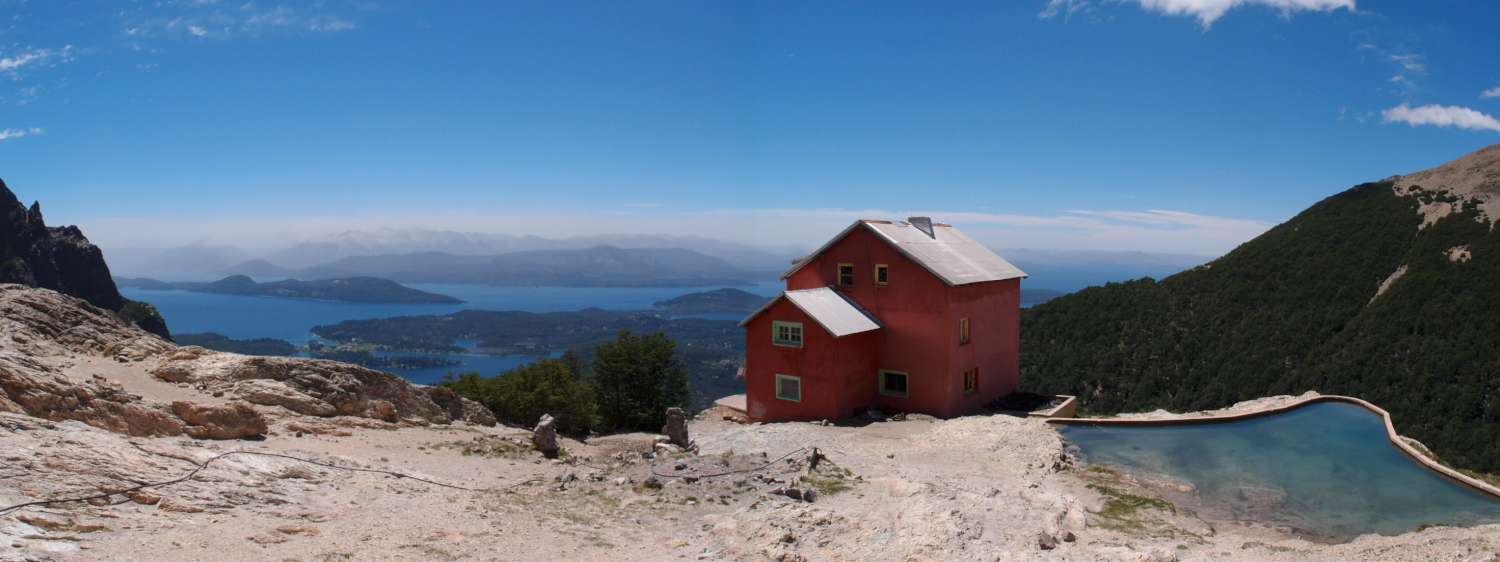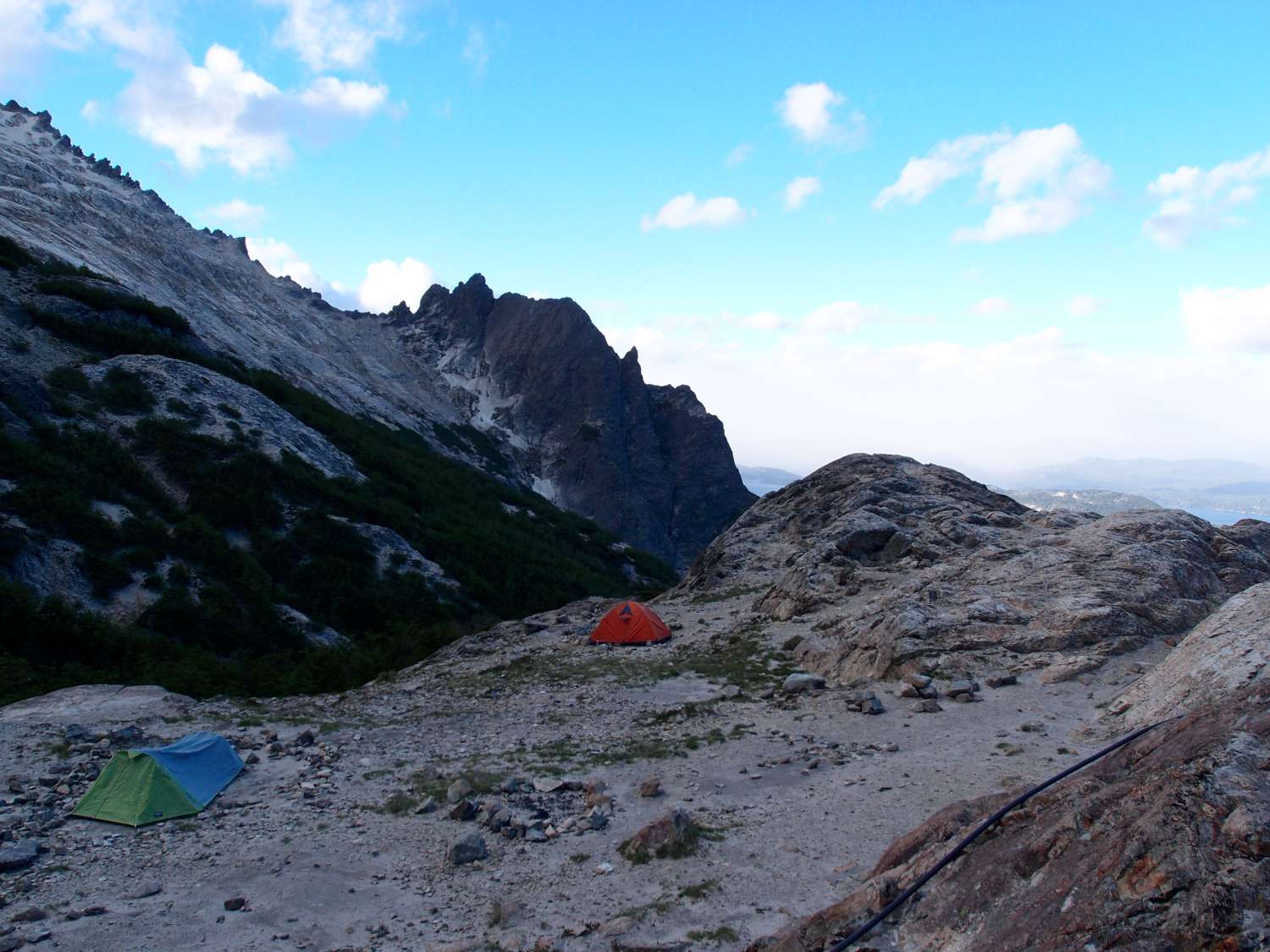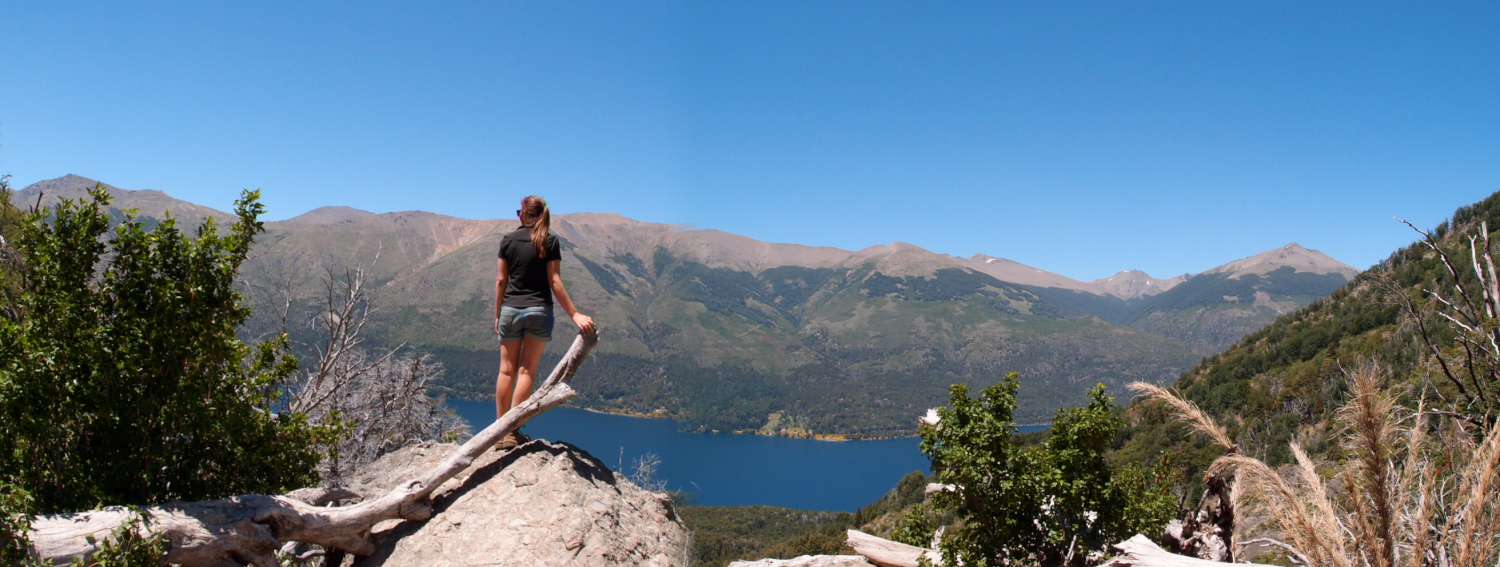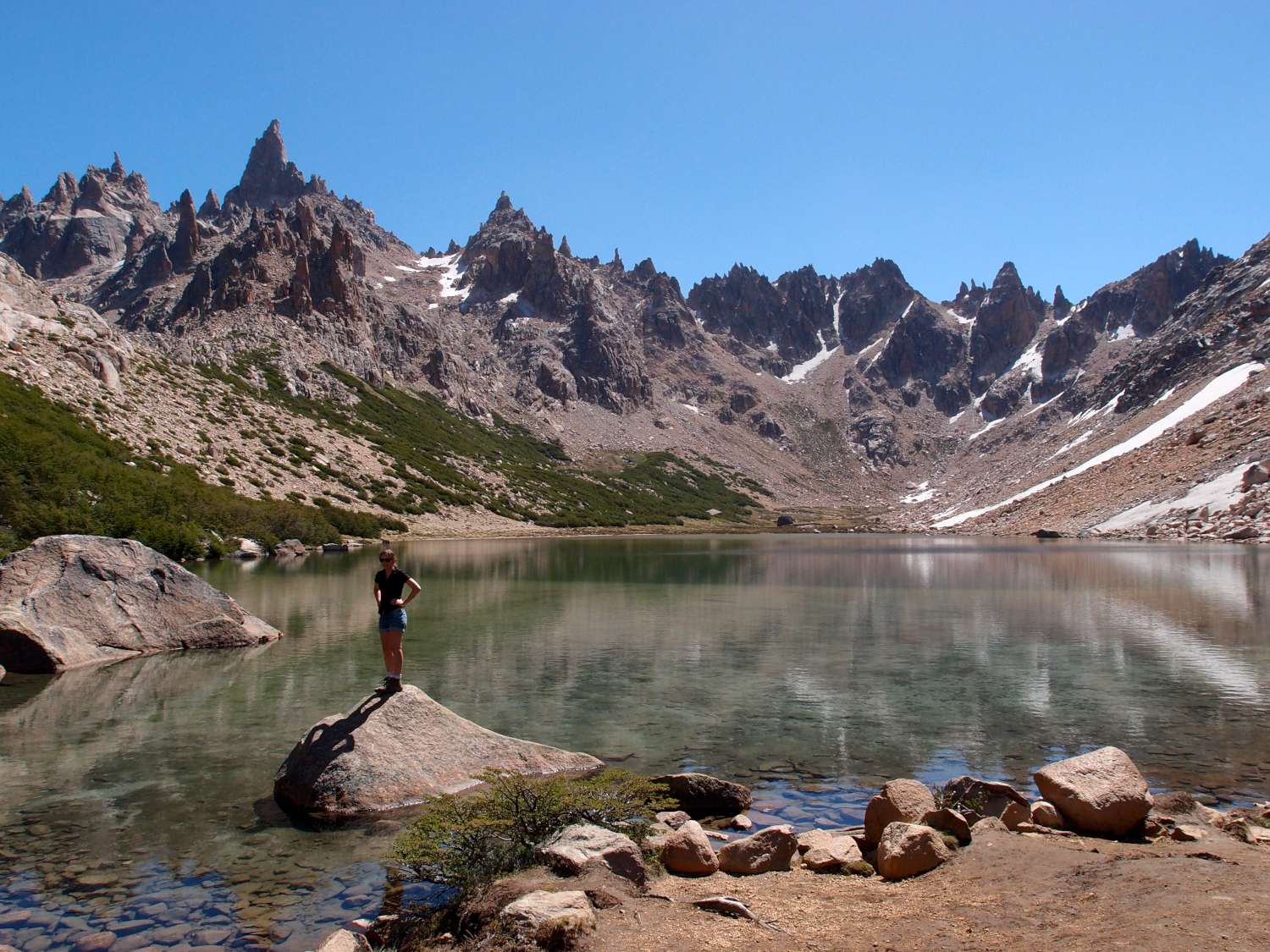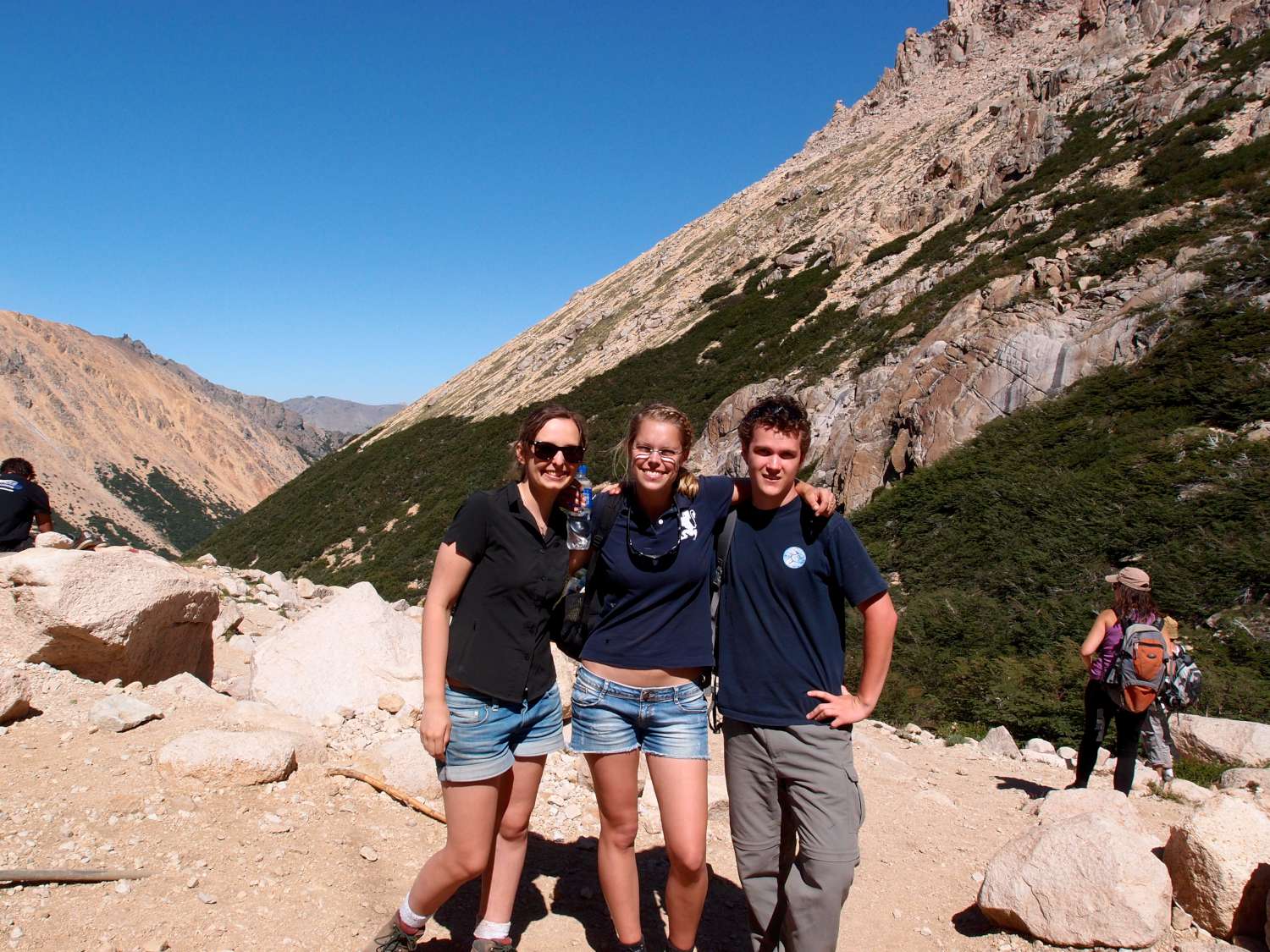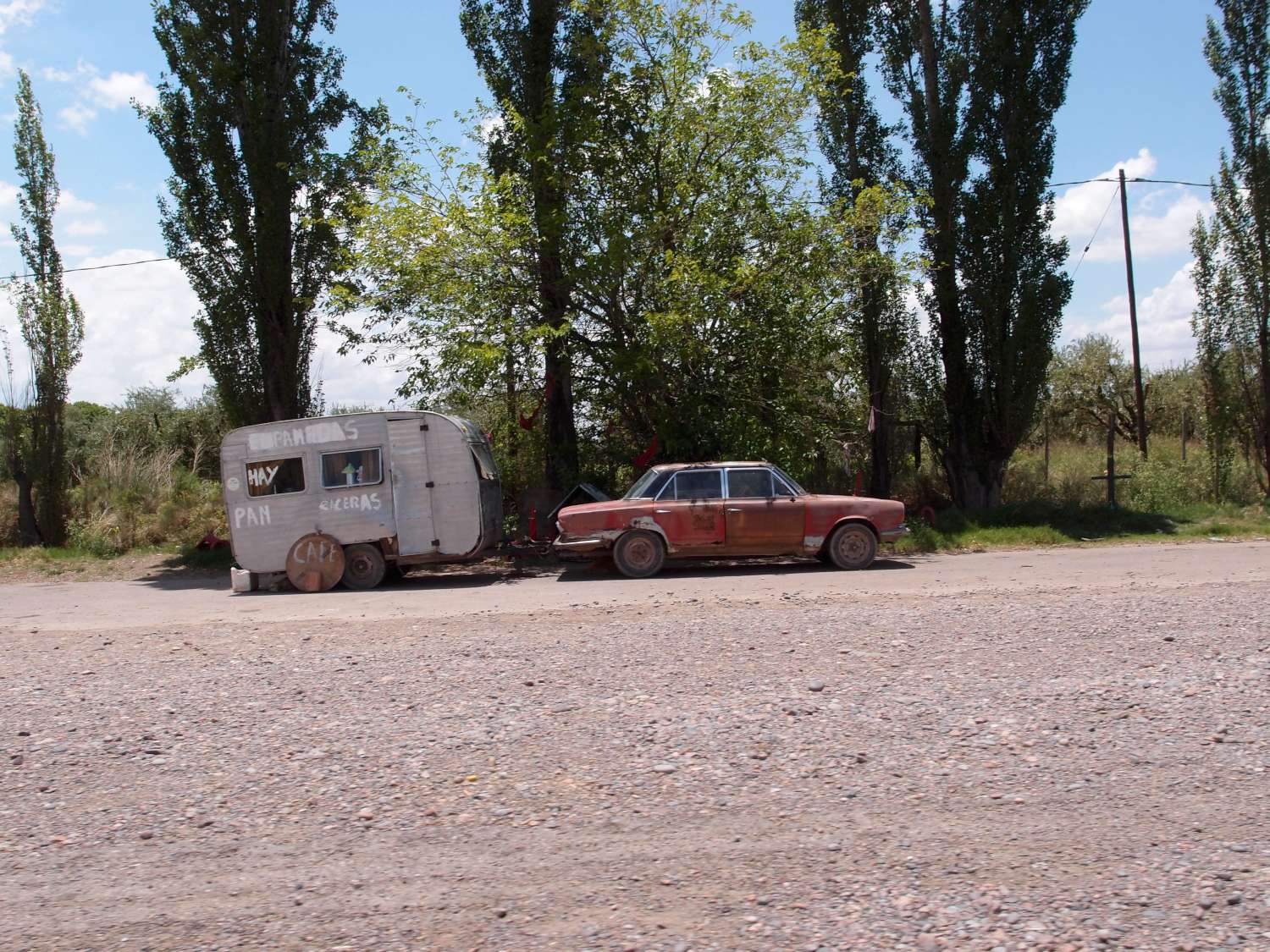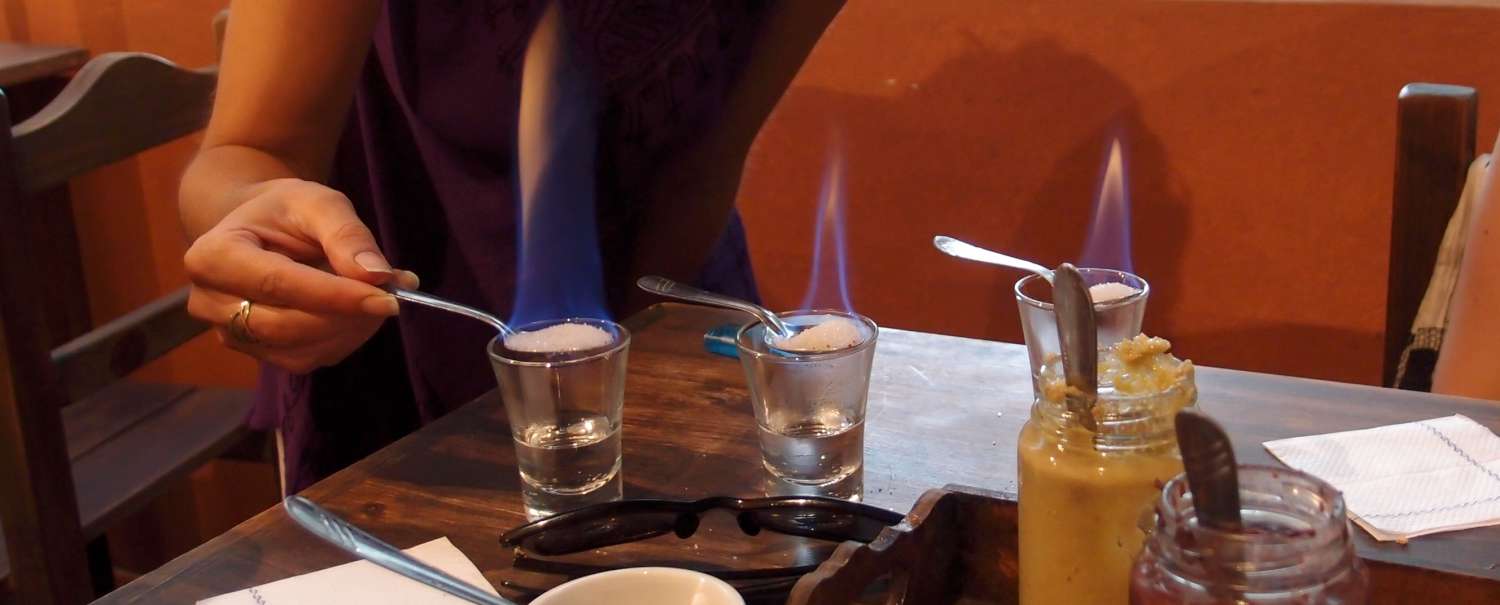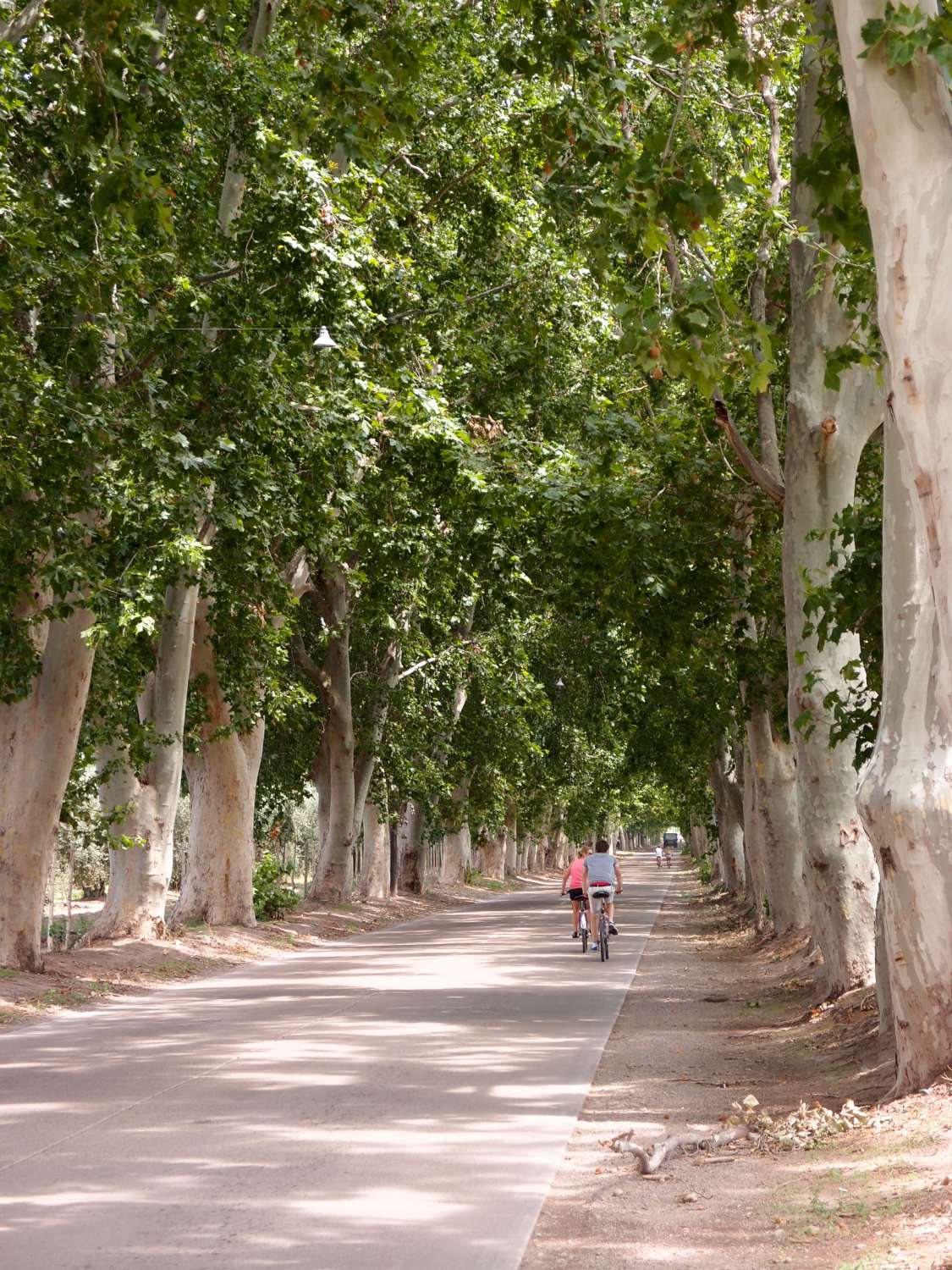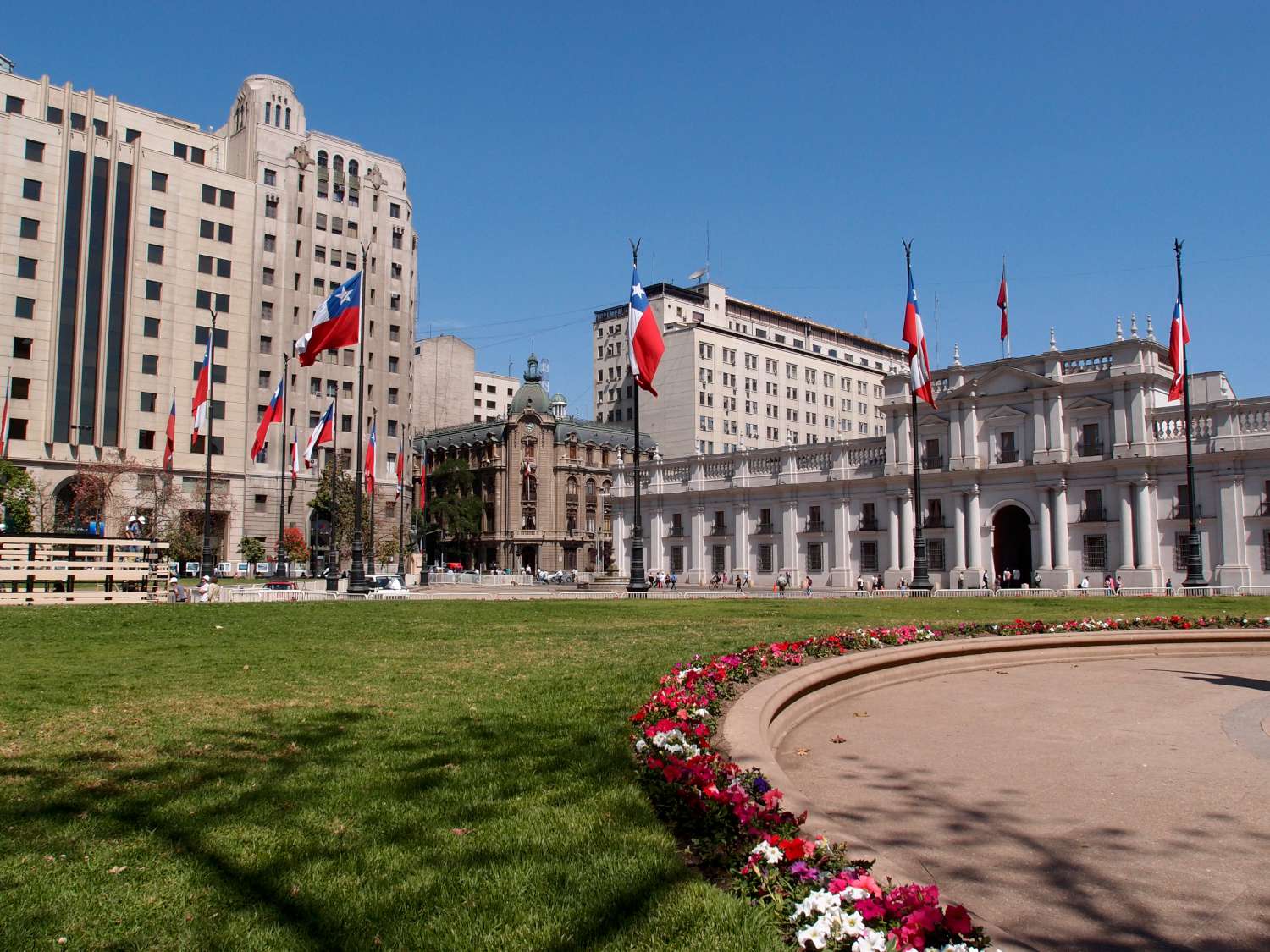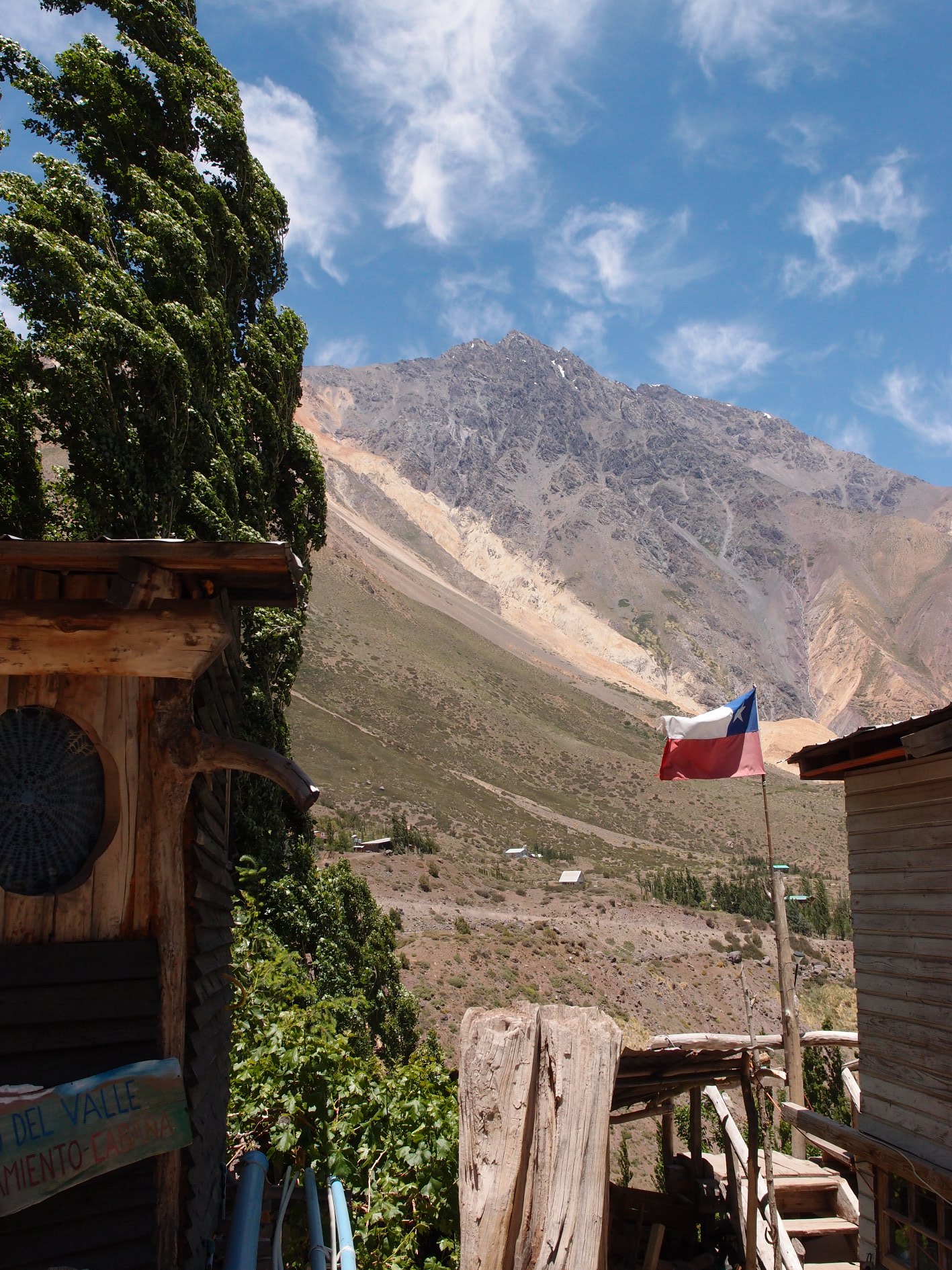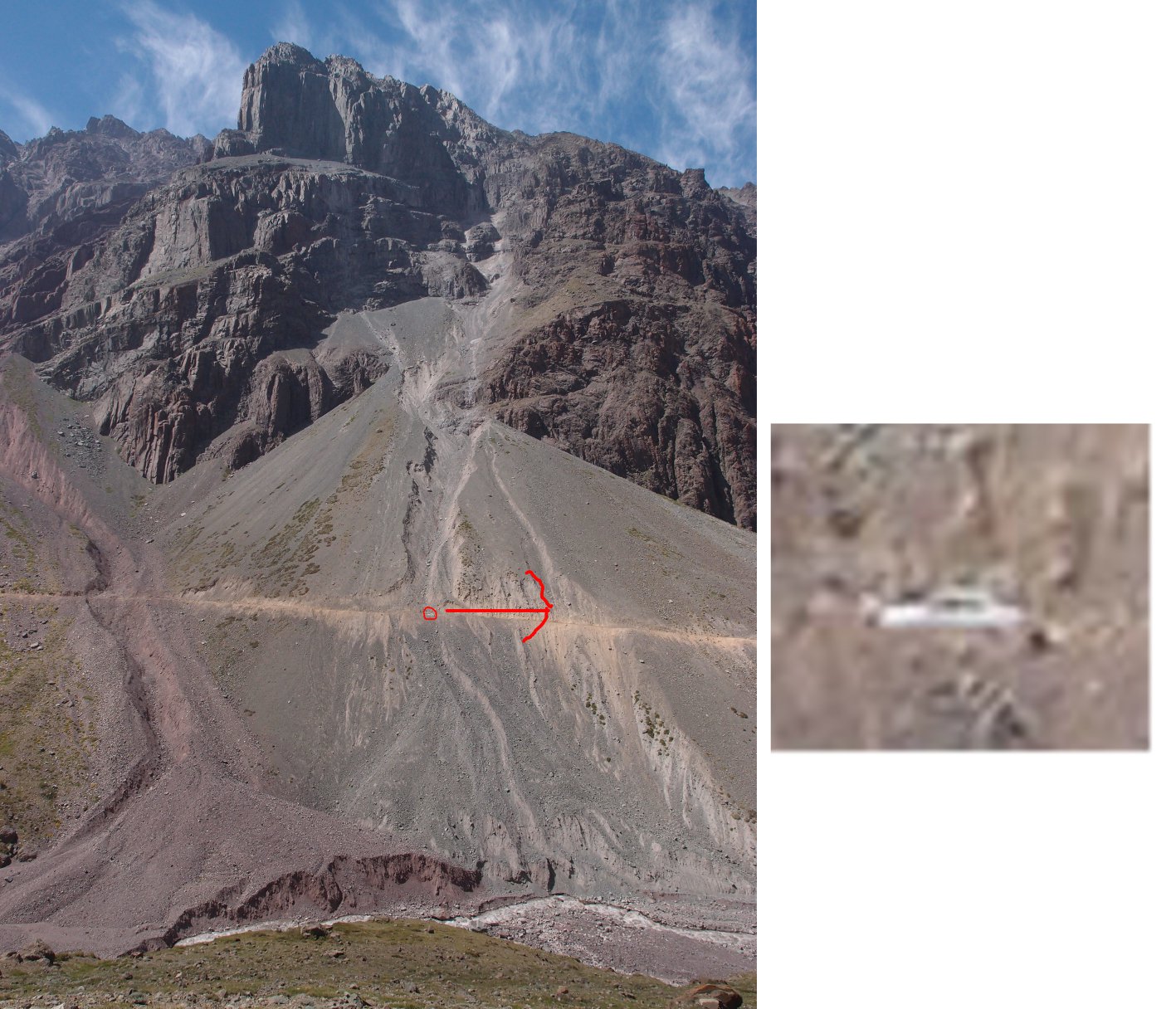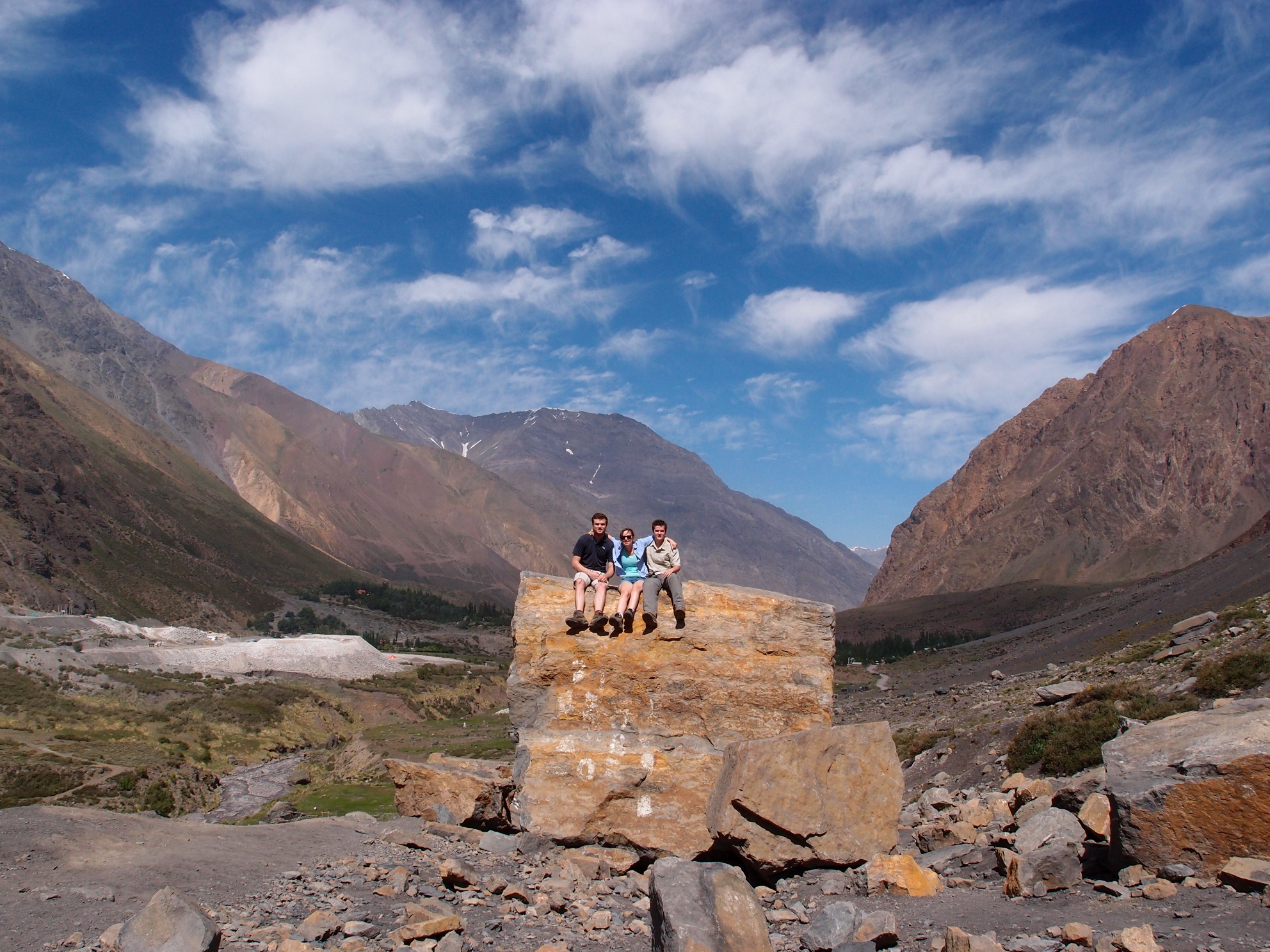Disaster on the Torres Del Paine!
December 31st, 2011So our attempt at finishing the Torres del Paine circuit was a blazing failure. That was a pun. If you can’t guess why, it will all become clear in time.
Torres del Paine (Towers of Paine – “Paine” I believe means blue in an extinct native language) refers to both the national park and these jutting out “towers” for which the park is famous (and obviously its namesake).

Image from wikipedia of Torres del Paine
I’ll start our story with the relevant history of the park: what we’ve gathered from speaking with locals is that the park started as farm land (albeit primarily unfarmable farmland due to its mountainous situation) and tourists wishing to hike through the land would request shelter, showers and whatnot from the farmers. Tourism increased and the farmers saw potential to capatalise on their situation, and set up serviced huts (called refugios). Most of the park has now been donated to the Chilean government, but parts, including some through which hikers pass, remains private property. The park is now one of Chile’s biggest tourist attractions bringing around 70,000 tourists every summer.
The biggest attractions of the park exist on a 4 day hike but for those wanting to see everything there is a 9 day full circuit (we got greedy and did this one). Okay, so to our adventures: around a week ago we set off for the 9 day circuit through the park. On the 5th day we joined the main tourist drag, looking forward to seeing the iconic towers and all the other sights the lazy 4 day trekkers come to see. That night, we met a somewhat panicked American couple who told us that they had left their tents for a short day trip to see the nearby glacier, only to find on their return that a wall of fire separated them from their stuff. Later that night the authorities closed the path until the fire could be controlled. The fire blocked our planned route too, so we had no choice but to wait and see what would unfold. On the 6th day the refugio staff informed us we would need to evacuate by the end of the day. The two options available to us were to go back the way we came or to pay for a $70 ferry ride out. The ferry was a tourist boat providing scenic views of the glacier, it was also the only boat on the glacial lake, and therefore the only evacuation route by water. We had been hiking next to this glacier for the past two days and were not too interested in paying for the privilege of seeing it from a slightly different angle. The ferry ran every few hours but was becoming increasingly late due to its new role evacuating hikers and supplying firefighters with new men and equipment. Even if we wanted to fork out that kind of money for evacuation we couldn’t since the ferries quickly become booked out. So again we had no choice but to wait around the refugio, peering out at the smoke wondering whether it was getting closer (A day later someone told us that it actually did burn down a neighbouring building to our refugio).
Later we were informed that even turning back was not an option, as the fire was spreading rapidly, and the entire park was to be closed for an indefinite period. This created the rather bizarre situation, one which could only ever be the result of poorly planned privatization, that we were legally required to leave, which we could only do by paying $70 per person, a price which many hikers don’t have the free cash to cover.
We figured if the fire got close enough the Chilean government would be obliged to pay for our evacuation. We didn’t have the highest hopes, however, as we had heard that the emergency response in South America was second-rate; rather than fire fighting vehicles and helicopters, the volunteer fireman only had shovels and buckets. Furthermore, one story recounted by another hiker was of a mountain climber who died during a climb in Argentina. The Argentinian government’s response, either through lack of interest or funds, was to leave the body on the mountainside, and now climbers have the opportunity to see a corpse hanging on the side of a mountain (this may attract more tourists so perhaps is not such a bad move). Anyway, our assumption that Chile would pay for our evacuation may be have been a risky maneuver in order to save $70 but it paid off in the end when the government announced a state of emergency and gave us a free lift back to Puerto Natales (although we arrived at 1 am without a place to stay).
So this is the reason we are back in Puerto Natales 3 days premature. The biggest “Paine” of this whole mess is that we missed the main highlights of the trek and probably won’t be back to this remote part of the world for a while.
Our 5 hiking days did however have perfect weather and we have seen things many wouldn’t. The weather was so rare that one park tour guide told us that it hadn’t been this sunny and dry in around 10 years. Usually, we’ve been told, the weather is really crazy with perhaps sun in the morning, gale force winds by midday and snow by night. Most visitors are still blown away by the park which I guess is the reason for the sustained numbers of visitors (once quite literally, four years ago, when the strong winds in the area actually blew a hiker away. He probably died).
Unfortunately the unusually blue skies and hot sun we experienced were a likely contributing factor to the fire. Despite not seeing everything we still managed to see 3 glaciers. One of which Sven and I managed to get extremely (and probably dangerously) close to during one of our wanderings (there is so much day light in the area that after setting up camp it is easy to check out the area near the campsite). We scrambled down these rocks and ended up at the glacier. I’ve made a strip of pictures to show you the events which transpired:
I think Sven would like me to mention that that ice could be thousands of years old and also contributed towards shaping the environment we all came hiking to enjoy. If tasting glacial ice allowed one to share this history and to be part of the amazing geological system (which most humans can only humbly observe) and experience just a small amount of the grandness of this landscape, then Sven might be a very wise person… but it doesn’t so he isn’t; he’s just an idiot.
We saw some pretty nice things in our 5 days but nothing which needs explaining, so here are some photos (They are in a higher resolution than usual so click to see them bigger); enjoy!
